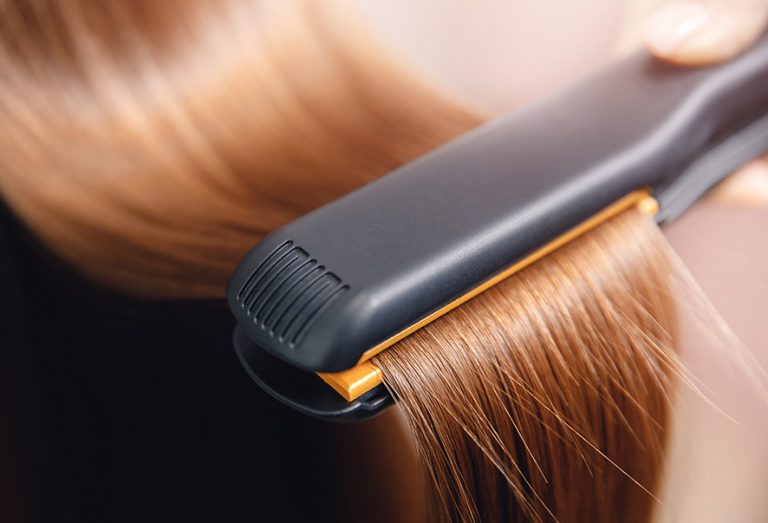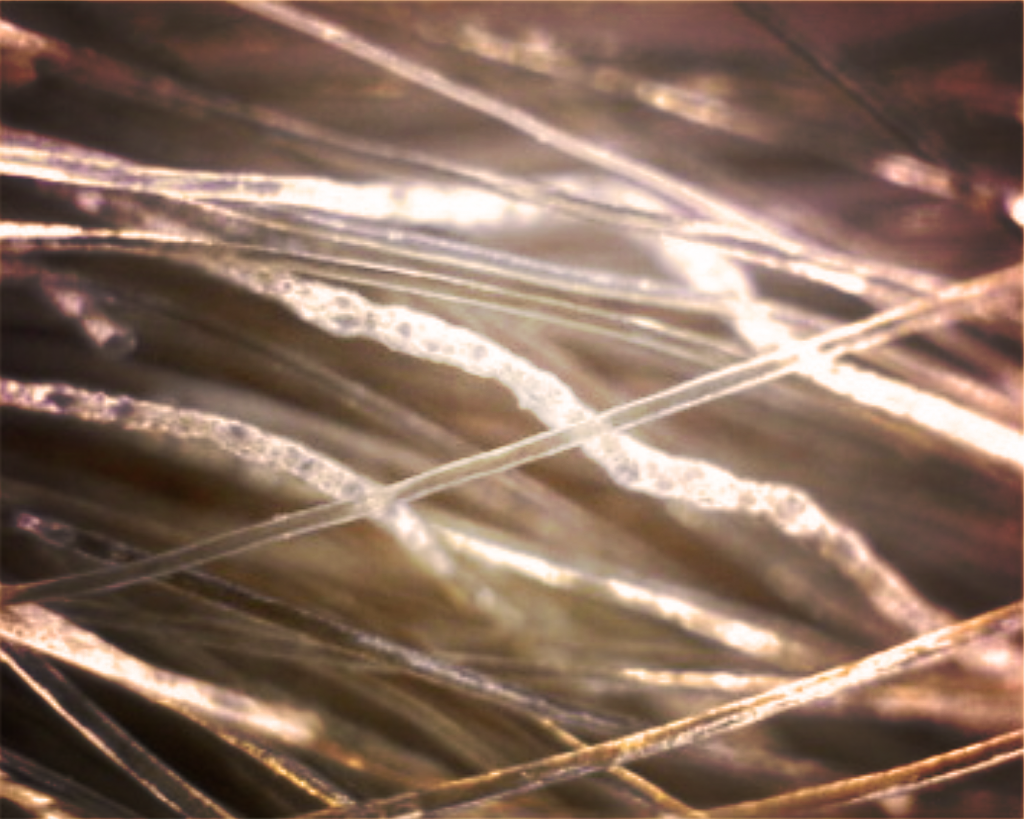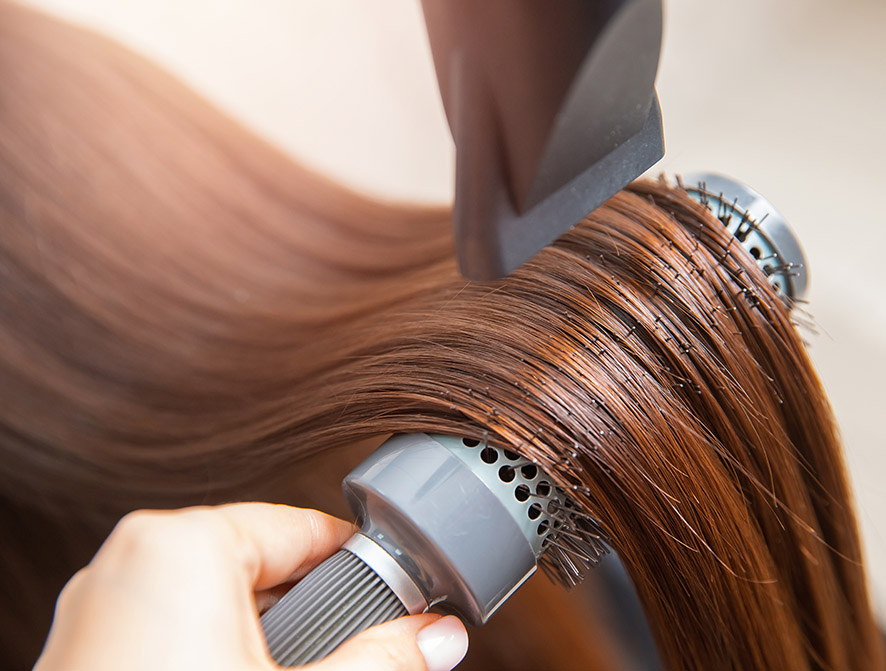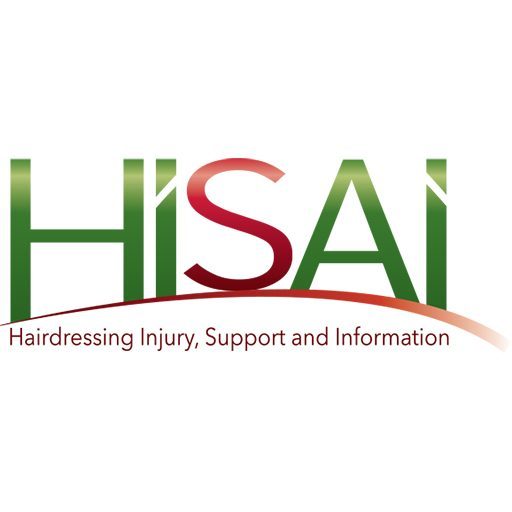Heat Damage

Hair Straighteners
Heated appliances can damage hair and the keratin starts to become affected. Hair cuticles starts to become damaged by heat over 190˚C.[1], [2] and burning, singeing of the hair at 300-400˚C.
However, before total breakage, high/repeated heat applications decompose the protein tryptophan in the hair creating the yellowing of white hair and darkening of bleached hair noted with hair that has been affected by heat in a significant way.
When heated ceramic straighteners are used, the hair will be smoother and easier to comb. However, because the heat gradually dries out the water content the lipid content and causes micro-crack to the cuticle, after shampooing and removing the products used to smooth and seal the hair, the hair will then feel dry as it has exposed the damage caused by an excess of heat.
Bubble Hair Syndrome
Bubble hair is an acquired hair shaft abnormality characterized by multiple air-filled spaces within the hair shaft. It is a result of thermal injury. Usually caused by using hot straightening irons on wet or very damp hair.
Hair dryers operating at 175°C or more can cause bubble hair. The use of hair curling tongs operating at 125°C and applied to the hair for one minute can also induce bubbles in hair fibre 3
All hair fibres contain air-filled spaces called vacuoles. These spaces can also become filled with water when the hair is wet. Too much heat vaporizes the water in the hair fibre into steam. This vaporization of the water may force the spaces in the hair to expand, eventually turning the hair into a sponge-like structure. These damaged hairs are weak and brittle as the bubbles destroy the integrity of the fibre.
Chemically processed hair is already porous and so likely to be more sensitised to such damage, and is identified with the use of looking at hair under a microscope.


Hair Dryers
Although using a hairdryer can cause more surface damage than natural drying, some interesting studies show using a hairdryer at a distance of 15 cm with continuous motion causes less damage than drying hair naturally.
Hairdryers cause damage when misused by applying the dryer’s nozzle directly to the hair or when the hair drier is not in constant motion creating a ‘hot spot’ on the hair or the scalp.
As the hairdryer is in constant motion and kept a good distance from the scalp, hairdryers are generally safe for the hair.
National Occupational Standards have been written for thermal styling and can be viewed via the website: https://www.ukstandards.org.uk
[1] Thermal degradation of hair. I. Effect of curling irons July 1998, Journal of the Society of Cosmetic Chemists 49(4):223-244,
[2] The toughening transition in hair keratin August 1993 Colloid and Polymer Science 271(8):802-804
3 Detwiler SP, Carson JL, Woosley JT, Gambling TM, Briggaman RA. Bubble hair: A case caused by an overheating hair dryer and reproducibility in normal hair with heat. J Am Acad Dermatol. 1994;30:54–60
I use a heat protection spray. Does this stop the hair from becoming damaged?
No, it can help, but it does not stop the effect of the heat on the hair.
A 1998 study looked at the effects of what is usually used as the active ingredient in protection sprays (PVP/DMAPA, quaternion 70, hydrolysed wheat protein). Studies showed 10-20% less damage in hair curled with hot ironing tongs when using a heat protection spray.
Researchers suggest that the product forms a thin-films on the hair surface, which slows down heat conduction and distributes heat more evenly. This means that the hair will heat up gently rather than suddenly, which causes less damage.
The key is that any product slows the effect of heat and not counters it entirely.

